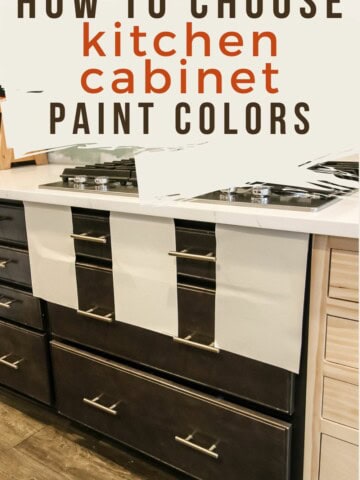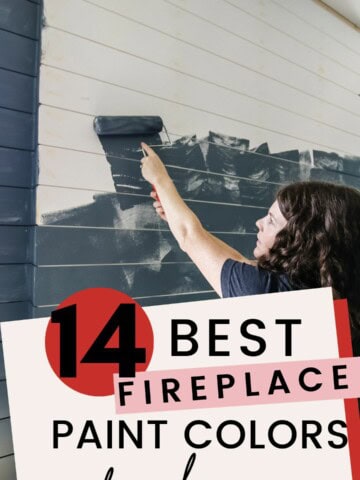Struggling picking a paint color? Let's get down to the basics and talk about undertones - the color tones inside each paint color that decide exactly how the color will read in any space!
Picking paint colors can be HARD! There are literally unlimited paint color options and getting started can be super overwhelming.
That's why I suggest starting with an undertone.
You don't have to be a color expert to see that warm colors tend to go well together and cool colors then to go well together. It is possible to mix the two, but sticking to one or another is more fool-proof.
So, you need to determine the undertone that you want to decorate with before even starting to pick a paint color.
My biggest suggestion? Determine the undertone of the elements in your room that won't be changing. This could be flooring, tile, cabinets, or furniture. It could even be a painting you want to design the living room around!
Choosing the right color for your walls means that you need to work with the things that won't change. Paint colors are infinite! The things you have in place are not.
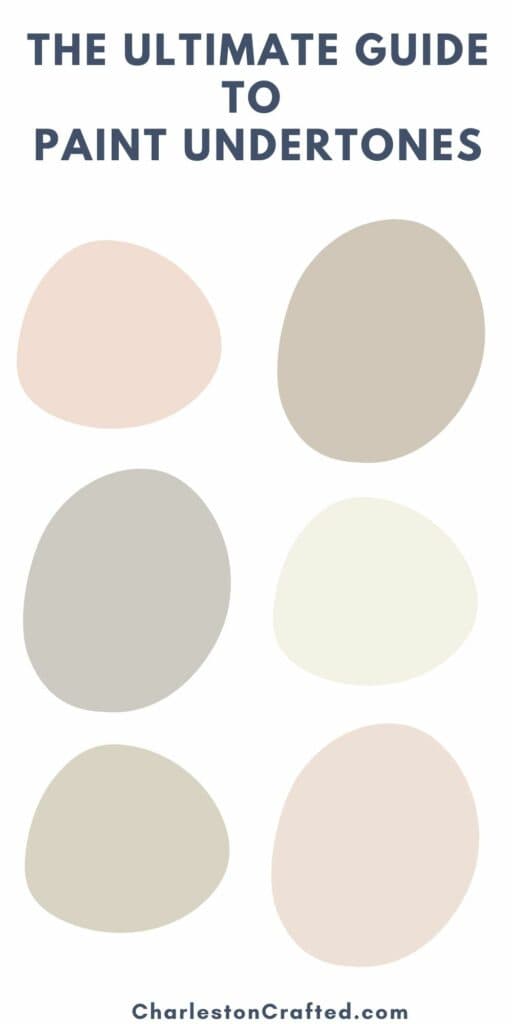
The ultimate guide to paint undertones
Overwhelmed by paint colors? Let's get paint undertones explained so it's not so overwhelming!
What are undertones?
Colors are complex. Paint colors are actually made up from several base colors blended together.
Undertones are the colors hidden within a color that completely change the way that it looks.
Masstones (or mass colors) are the more obvious main color that a color is.
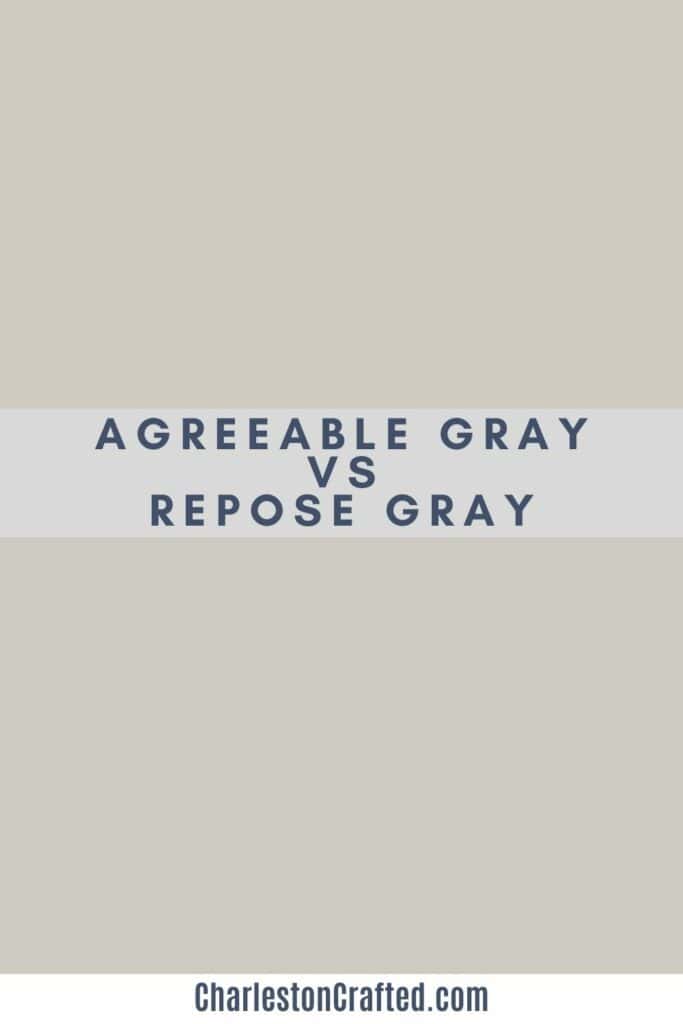
Let's look at the top two colors for an example. They are Agreeable Gray and Repose Gray. Both of their masstones are - you guessed it - gray!
But, if they are both gray, why do they look so different?
They have different undertones! The secondary colors mixed into the gray mass color totally change the color to make it completely unique.

Why do undertones matter?
Undertones matter because they have a big impact on the way that a color looks. If you pick a color with the wrong undertones, it will often clash with your home's existing finishes instead of meshing with it.
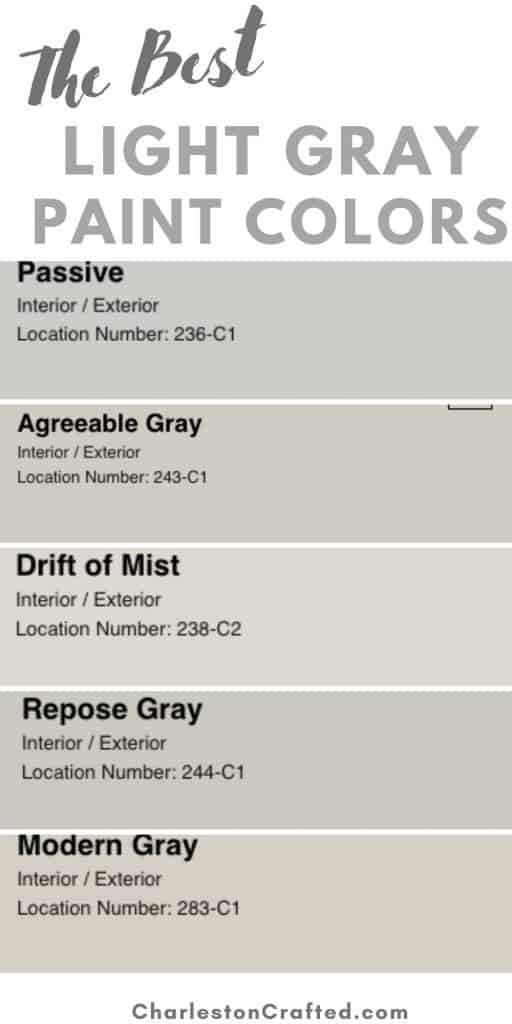
How can you tell a paint color's undertones?
Here is the process that I use to determine a paint color's undertones.
STEP 1: Get paint strips
Get a paint strip for the color that you want to use
STEP 2: Look at the darkest shade
Look at the very bottom color on the strip - the darkest shade.
Usually the darkest color is the one that will make it easiest to see the true color since it has the most pigment.
This works really well with light, neutral colors. Tans suddenly look very green, brown, or even purple!
STEP 3: Grab other color strips
Still confused? Grab some other color strips that looks similar.
For example, if you are looking at grays, grab 5 or more other gray sample cards.
Lay them all out next to each other - on a white sheet of paper.
Now, laying horizontally they won't look exactly like they would look on a vertical wall, but you should really quickly see how different the colors are - even if they all have the same masstone!
Blue undertones, yellow undertones, green undertones will all start popping out when compared to pure white + other similar paint colors.
STEP 4: Compare to permanent fixtures
This is a super important step that should NOT be skipped.
Once you identify the color that you think you like best, place the swatch next to permanent items such as the couch, flooring, or tiles. Things that won't be changing.
Don't tape the color to your painted walls (assuming you will be painting over that color, it will only skew how it looks) but put on white paper or directly on the fixture.
Make sure that the undertones of the two colors mesh and that your color doesn't suddenly feel different from the look that you were going for!
If you want to practice identifying paint undertones, grab as many swatches for white paint as you can. Lay them out on a sheet of pure white paper and prepare to be amazed by all of the different white paint colors!
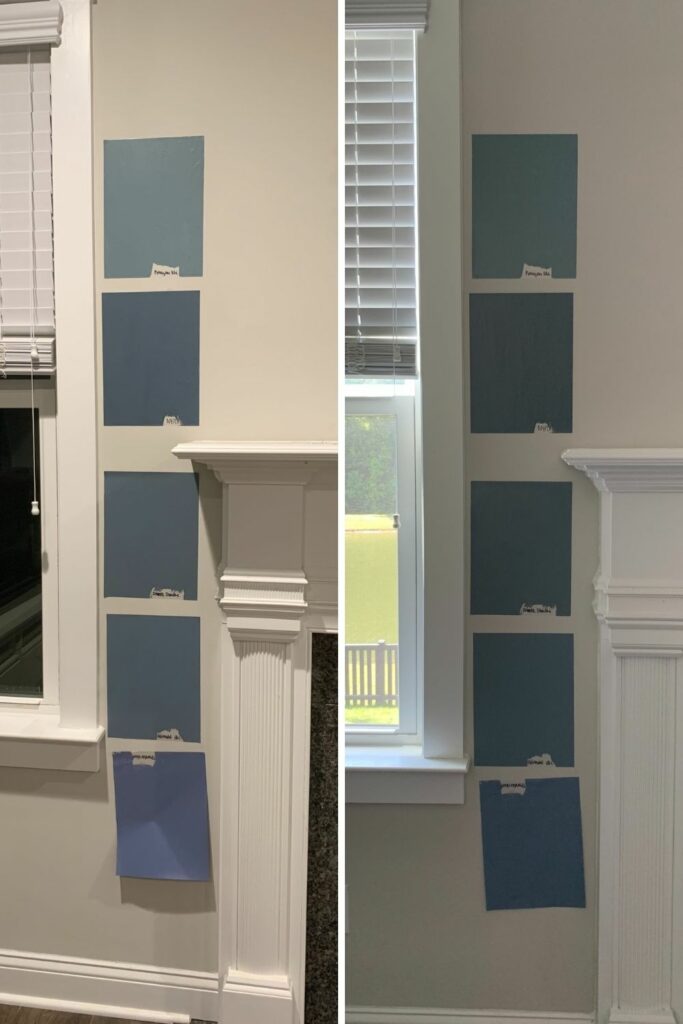
How can you tell if a paint is warm or cool?
A color's warmth or coolness is determined by it's undertones. Think about the color wheel and the division of warm and cool colors.
Warm undertones include red, orange, yellow, or gold.
Cool undertones include blue, green, and purple.
You don't have to be an interior designer to pick the perfect paint color! Taking some time to understand the undertones will help you pick the right color scheme the first time!

Get paint samples!
Samplize will send you 12"x12" peel and stick samples of paint colors from many popular brands so you can see exactly how they will look in your home!
Love paint colors? Be sure to check out:
- The Paint Color Formula - my complete guide to picking paint colors!
- My guide to paint sheens
- My guide to paint undertones
Painting for the first time? Check out my video tutorial on the easiest & cleanest way to open a paint can!
Looking for something?
We've been doing this since 2012 so we have a LOT of blog posts!
Search stuff like: Ceiling Projects | DIY Plant Stands | Thrift Flips


Hello, I'm Morgan, half of the creative force behind CharlestonCrafted.com! With a passion for DIY that dates back to 2012, I've transformed three homes and now I'm dedicated to helping others craft their dream spaces. Let's turn your house into a home together!




